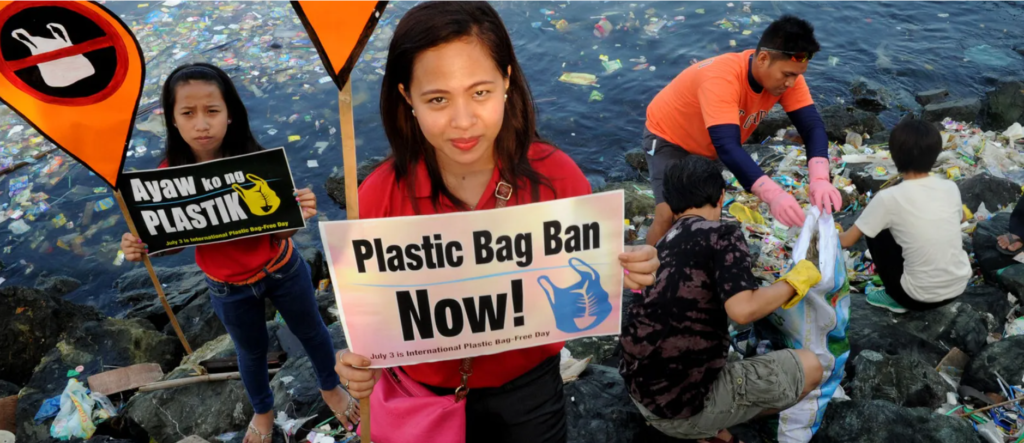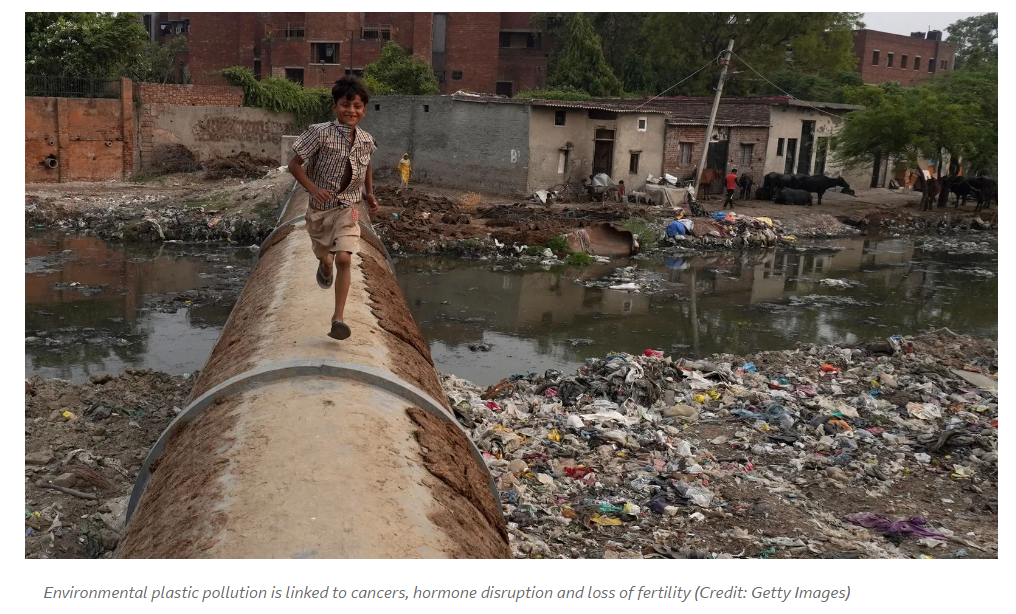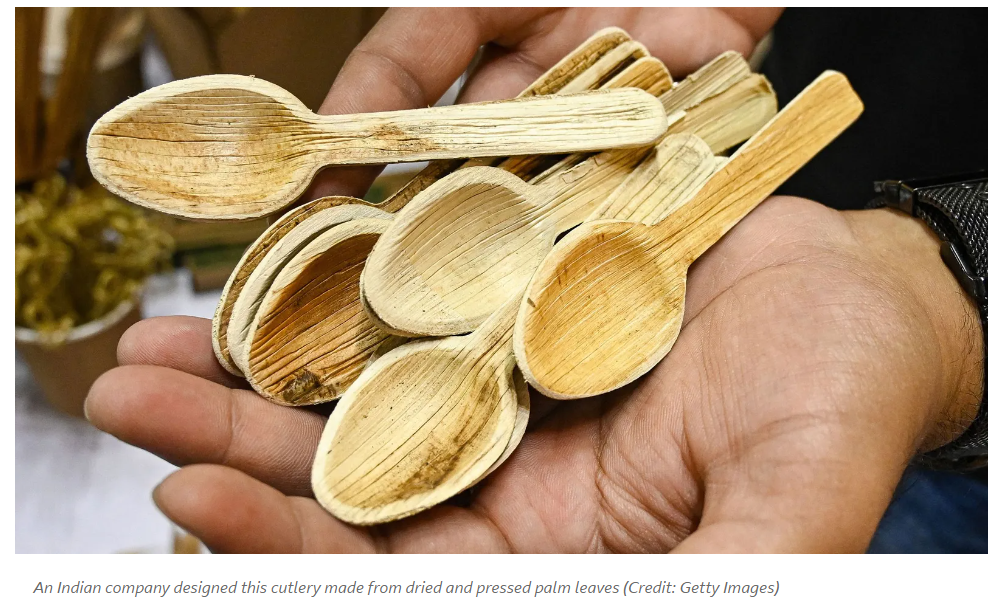
The problems caused by plastic waste are rapidly increasing around the globe, but it still serves a useful purpose in food packaging. Can plastic still be a green option?
In many countries, plastic straws are increasingly hard to come by. In the UK, where I live, they were banned completely at the end of 2020 along with plastic coffee stirrers. So when I am offered a straw in a restaurant or café now, it’s usually made of paper.
But these paper straws bend and go limp after a few minutes in my drink, and in the end they all go in the general waste, either to an incinerator to be burned to produce energy, or to landfill.
Do I really want a paper straw? I am lucky enough to be able to lift that glass to my lips, so I might as well do so. And just like that, a step towards zero waste is taken, and it feels good.
Single-use plastics seem to be disappearing. Australia has had a plastic bag ban since 2018. India followed the UK with a ban on straws, cutlery and food packaging in July 2022. In my home country of France, plastics are now banned on fresh fruit and vegetables.
While plastic waste is a problem, plastic is also a useful material in which to package food. So why is it the subject of so much attention? And does plastic still have a place on our supermarket shelves?
In 2018, we produced two billion tonnes of solid waste globally, of which 275 million tonnes was plastic. With the world population predicted to double by 2050, waste will increase by 70%.
Globally, packaging is the largest source of plastic waste – and by some margin. In 2015, 141 million tonnes of plastic packaging waste was generated, compared to 42 million tonnes of plastic textile waste – which was the next largest sector.
Some countries are able to recycle most of their plastic waste. Up to 56% is recycled in Germany, closely followed by Austria, South Korea and Wales. But the global picture is quite different – 15% of plastics go to recycling, but 40% of this waste is rejected for contamination or other issues, meaning only 9% of plastic waste is actually recycled. By contrast, metals can have an up to 100% recycle rate.

But while unsightly, plastic straws and cling wraps are only a small contributor to plastic packaging pollution. This got me thinking; how much of a difference will plastic packaging bans make? And is plastic always the villain it is made out to be?
Is plastic the public enemy it is made out to be?
It is very complex to evaluate life cycles of materials, and in certain cases there is obvious plastic bashing, says Romane Osadnik, an account manager at CITEO, a French non-profit company founded to reduce the impact of packaging materials. Osadnik helps companies identify and calculate the emissions from their packaging.
“Plastic can sometimes be the best option,” Osadnik says, “especially in the food industry. Film wraps and plastic bags that seal food [like cucumber wraps] preserve the quality of the food and are lightweight options.”
France recently banned the use of plastic wrapping in the food industry. When walking down the fruit and vegetable aisles of a French supermarket, you are now likely to see only loose items, with occasional styrofoam nets wrapping exotic fruit (or plastic bags for larger quantities like bags of apples).
Will other countries follow suit? Personally, I have seen the amount of plastic wrapping in British supermarket decrease rapidly since arriving in London a year and a half ago, but smaller chain supermarkets still tend to offer little to no loose vegetable options.
In the end it often turns out to be more polluting to use cardboard wrapping than plastic, when the entire food production chain is taken into account – Romane Osadnik
The journey from the field to the supermarket or market stall requires packaging to protect the produce. So in France, cucumbers, which might once have been wrapped in clear plastic film, are now delivered to supermarkets in containers made of alternative materials. “Plastic is most commonly replaced with cardboard,” Osadnick says, “but food can be damaged more easily in cardboard causing more food waste in transport, and it weighs much heavier [which] means in turn that more lorries are needed to carry the same quantity of product. Transport weighs heavily in the life cycle of food. In the end it often turns out to be more polluting to use cardboard wrapping than plastic, when the entire food production chain is taken into account.”

Likewise, a life cycle assessment of single-use plastic, plastic “bags for life”, cotton and paper shopping bags found that cotton and paper had the highest negative impacts for measures like fossil fuel use.
There may be an appropriate time, then, to use plastic. Perhaps the problem is that we are accustomed to using plastic only once and discarding it. The prevalence of plastic waste has led to serious concerns about the effect it has on human health. Plastics leach a class of chemical called endocrine disruptors, which can block or change how hormones are used in our bodies. Plastics are sometimes coated with polyfluoroalkyl substances (PFAS) – often referred to as “forever chemicals” – which have been linked to several diseases.
Are there better examples elsewhere that could inspire alternatives? India, like much of the world, has an expanding plastic problem. Plastic waste per person doubled between 2016 and 2020.
“In Delhi, street food used to be served in a banana leaf container and the cutlery was also made of natural material,” says Harsh Malhotra, an Indian urban designer. Malhotra grew up in Delhi, then lived in the Netherlands and UK before moving back to his home country.

“I remember walking to the farmer’s market with my grandfather as a very young child, he would always carry a cloth carrier bag on the shoulder,” says Malhotra. “Somehow, my parents lost the habit, and… the greengrocer now wraps greens individually before storing them in my carrier bag. I can’t help but wonder where it went wrong.”
Those banana leaf containers might be making a comeback. One Indian 20-year-old used this centuries-old tradition as inspiration to develop a technique to prevent leaves from degrading for up to three years. After treating the leaves with UV and shaping them into plates and cups, they can be used and reused as plastic replacements. This take on a traditional practice promotes a local sustainable solution and cultural heritage.
Assessing the life cycle of a material is complex. For instance, producing glass is very energy intensive, but if it is well kept it can be cleaned and reused perhaps indefinitely.
Linda Gaines, an environmental scientist at Argonne National Laboratory in the US, and her late colleague Max Mintz found that although you can recycle glass indefinitely through melting, this process does not save a significant amount of energy compared with primary glass production – at best it saves 13% of the energy. Glass is more eco-friendly than plastic only if it is reused and in many cases (due to the lack of glass collecting networks), plastic might be more sustainable.
“In emerging economies the cost of [producing] beverages is cheaper than in the industrialised world,” Nathan Dufour from Zero Waste Europe, an NGO that is trying to find alternatives to incinerators, explains. “As a result, the cost of packaging represents a higher proportion of the total price. This explains why it makes more economic sense to keep refillable packaging, be it in glass or plastic, in countries in the global South,” he says.
“So, big consumer brands have transitioned away from refillables to single-use packaging faster in the global North than in the South; it simply made more economic sense,” he says.
Dufour suggests that if companies are shown economically interesting ways of being sustainable they will go for the more sustainable option without a second thought. Consumers can contribute to tipping the balance to the more sustainable side.
Plastic is a victim of its own success: cheap, light and flexible. It’s so cheap that many of use don’t question using it once and throwing it away. It’s so useful that we find it everywhere. While plastic waste is a pressing problem, its properties mean that it still has an important part to play, particularly in transporting food.
So before we give up on plastic, perhaps we should think about how to use, and reuse, it better.
BBC



